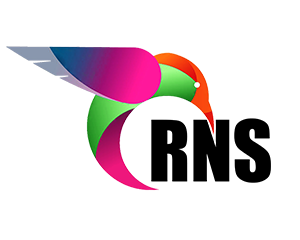Node.js vs Ruby on Rails: What to Choose in 2024?
Introduction
In 2024, both Node.js and Ruby on Rails are still quite popular frameworks for web apps, which have their own strengths. Node.js is the best for real-time apps because of its event-driven, non-blocking model but Rails beats traditional MVC patterns. Node.js works with JavaScript and benefits from NPM-rich modules and the speed of the V8 engine.
When choosing between both frameworks, the decision should be based on team experience, app needs, and language preference. It is important to consider these factors, as both frameworks can build scalable web applications. In this article, we will look into the industry application, benefits, and drawbacks of Node.js and Ruby on Rails.
Node.js: What is it?
Node.js is an open-source, cross-platform JavaScript runtime environment that permits developers to build server-side applications with JavaScript. Introduced in 2009 by Google, it is implemented with Google’s high-performance V8 JavaScript engine and an event-driven, non-blocking I/O model for lightweight and easy scalability. This makes Node.js perfect for real-time applications like chat rooms and streaming data.
Node.js has a huge ecosystem of open-source libraries and an active community. Node.js combines the capabilities and perks of JavaScript for the server side.
Who uses Node.js?
Some of the reputed brands in the market like Netflix, PayPal, Uber, NASA, LinkedIn, Walmart, Medium, eBay and Twitter are leveraging NodeJS capabilities to achieve the desired results and offer their users with the best user experience.
Benefits and drawbacks of Node.js
Benefits
Single language across the stack – Node.js provides full-stack JavaScript development possibility which lets developers use a single language across the entire stack from front-end and back-end, reducing context switching between different languages and increasing productivity.
Event-driven model – The event loop and non-blocking I/O are responsible for high throughput and scalability for real-time web apps.
Large ecosystem – Node.js has a huge pool of open-source libraries and tools as an ecosystem. It allows developers to quickly build and deploy Nodejs applications without having to write everything from scratch.
Drawbacks
Callback hell – Nested callbacks make the code difficult to understand and maintain.
Single-threaded – A single thread can cause vertical scaling issues for CPU-intensive work, especially when horizontal scaling is involved.
Young platform – Node.js is younger than Java and Python, so it has less mature libraries and tools.
Blocking I/O- Despite having non-blocking I/O, some APIs and libraries block the event loop which affects the performance.
Ruby on Rails: What is it?
Ruby on Rails is an open-source web application framework that was written using the Ruby programming language. It is built to simplify web programming where developers do not need to feed in instruction. It is much more flexible to learn Ruby that allows you to write less code while doing more than what most of the other languages and frameworks can do.
Rails highlights the use of conventions over configuration, the DRY principle, and the development of RESTful web services. Rails apps are built database-agnostic and they support multiple databases like MySQL, PostgreSQL, and SQLite.
Who uses Ruby on Rails?
Many renowned businesses like Airbnb, Github, Shopify, Hulu, Twitch, Soundcloud, Square, Zendesk, Basecamp, Bloomberg, Motorola and SAP have trusted Ruby on Rails to achieve their development goals.
Benefits and drawbacks of Ruby on Rails
Benefits
Faster development – It follows the “convention over configuration” principle, so it has default sensible settings and the developer needs less code, which shortens the app building time.
MVC Architecture – Rails follows the model-view-controller pattern where business logic is separated from the presentation, thus making the code easier to organize and maintain.
Active community – Rails has a large open community, therefore developers can benefit from a lot of libraries, tools, and documentation. Developers can always find help.
Code readability – Ruby’s code is usually easy to read and understand, even if you are new to the language. That way, maintenance and collaboration become easier.
Lots of libraries – Rails is packed with tons of built-in libraries and third-party extensions/packages that turbocharge development. It will not keep repeating the process again and again.
Scalability – Rails facilitates the scaling of an application as the need arises through the use of caching, background workers, and other strategies. Both horizontal and vertical scaling are supported.
Drawbacks
Performance – Rails becomes less performant at a large scale because the dynamic Ruby code is interpreted each time, leading to higher runtime.
Complexity – Rails employ a considerable amount of automated processes and conventions, which make debugging difficult. This is also why beginners find it more difficult to learn.
Fast-paced – Rails gets new versions quite often, that’s why apps need to be updated regularly to work well adhering to the latest Version.
Not an ideal choice for non-database apps – Rails is built on a relational database and MVC, and can’t be used in applications with other architectures or for non-relational data.
Hosting – The choices are not as diverse compared to languages like PHP.
Conclusion
So the ultimate question is: which one to choose in 2024? Selecting the tech stack is the core part of any project and it should be done after thinking about business models and analyzing the pros and cons of both technologies. The decision between both the framework depends on the implementation rather than the specific language or framework being used in the development of the application. To simplify the decision-making, examine the pros and cons of every technology’s features.
In summary, choose Ruby on Rails to develop a full-stack web application, content management system, or minimum viable product. On the other side, Node.js is an appealing option when it comes to server-side development, API development, microservices, and browser-based game applications. The point is to ensure that the technological solution is appropriate for your project in terms of the requirements and meeting the goals.





Trackbacks & Pingbacks
[…] Struggling to choose between Node.js vs Ruby on Rails for your next project? This guide dives into the strengths and weaknesses of each framework in 2024. Discover which option aligns best with your development needs. […]
Leave a Reply
Want to join the discussion?Feel free to contribute!